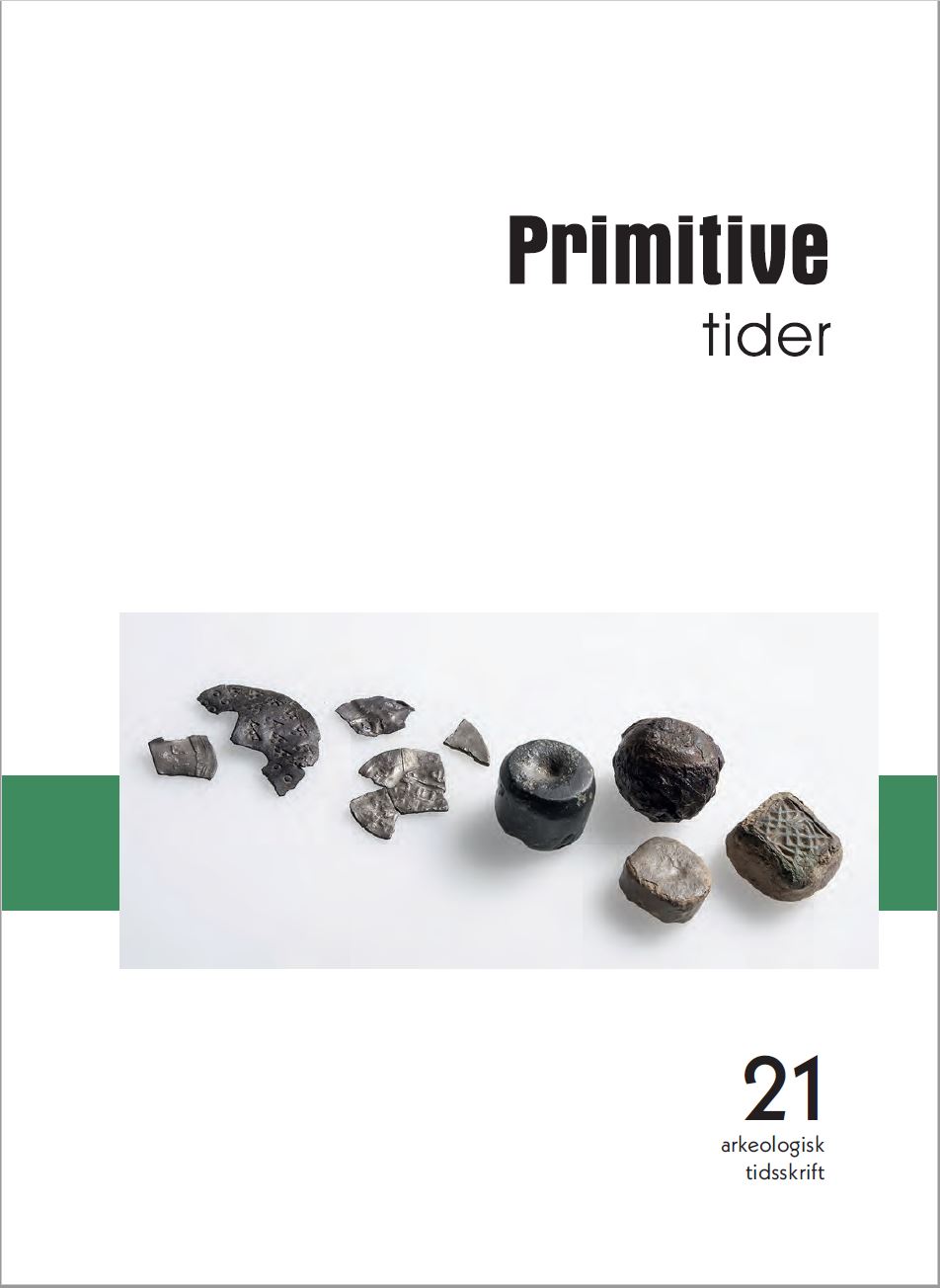Mistet på sjøen? En nyoppdaget fiskekrok fra steinalderen i Søgne, Vest-Agder.
DOI:
https://doi.org/10.5617/pt.7534Sammendrag
The starting point for the present paper is a recent discovery of a well-preserved bone or antler fishhook, which turned up in a test pit during an underwater survey outside Tømmervigodden in Søgne, southernmost Norway. The hook is the third archaeological bone find from submarine context in Søgne. Tømmervigodden is located two kilometers away from Hummervikholmen, a submarine site known for revealing the oldest human remains from Norway, dated to the Middle Mesolithic (c. 8300-6300 cal. BC). Furthermore, a harpoon has been found in Lundeelva, approx. eight kilometers inland to the northeast. These finds demonstrate the extraordinary conditions for preservation of organic remains in the area.
This article present the artefact and we discuss the issue of dating and deposition based on typology, context, and shoreline displacement curves. How old is the fishhook? How did it end up in the sea, and why is it so well preserved? The site is located in one of three areas along the Norwegian coast with potential for transgressed Mesolithic sites. The sea levels has fluctuated in Vest-Agder since the end of the Ice Age, and the sea has periodically been both higher and lower than today.
The location close to Hummervikholmen and another Mesolithic site located on dry land at Tømmervigodden, initially suggested a Mesolithic date. However, the form of the fishhook, with a barb and elongated knob for attachment of the line, differs considerably from well-dated Mesolithic fishhooks in the region. The newly discovered fishhook has a distinct barb, an attribute previously considered a Neolithic trait. A precise dating would be crucial, but the closest typological parallels are undated stray-finds and C14-analysis would have destroyed the small object. Hence, dating of the hook requires a new assessment of the typology and chronology of the Stone Age fishhooks.
Based on chronological and regional comparisons, we argue for a Middle Neolithic date of the fishhook from Søgne. Based on current knowledge of the local shoreline displacement curve and the formation processes influencing the seabed, we further suggest that the fishhook was lost at sea during fishing, when the sea level was at least five meters above present.

Nedlastinger
Publisert
Utgave
Seksjon
Lisens
Fra og med årgang 2021 er innholdet i Primitive Tider lisensiert gjennom Creative Commons Navngivelse 4.0 Internasjonal (CC BY 4.0).
© CC BY-NC (2014–2020)
Verk mellom 2014 og 2020 lisensieret under en Creative Commons Navngivelse-IkkeKommersiell 4.0 Internasjonal.
© Forfatter(ne) (1998–2013)
Verk mellom 1999 og 2013 er beskyttet av åndsverkloven. Uten eksplisitt autorisasjon er reproduksjon kun tillatt i den grad dette er i henhold til loven, eller etter avtale med rettighetshaver eller en kollektiv forvaltningsorganisasjon.

